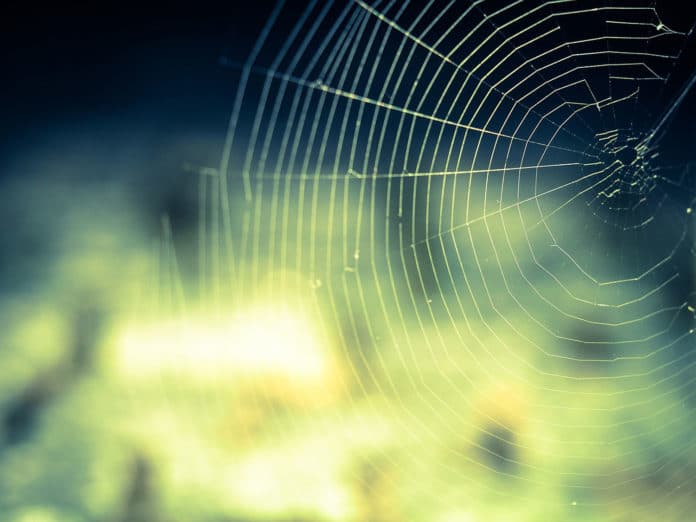Spiders are fascinating creatures. They are the master builders who expertly weave strands of silk into intricate webs. Spider make their webs from silk, a natural fiber made of proteins.
The geometric complexity and stereotypy of spider webs have long generated interest in their algorithmic origin. Understanding how these small-brain creatures created such high-level construction projects requires documenting and analyzing the behaviors and motor skills involved.
However, doing so is a challenging task as it requires capturing and recording the actions.
Now, scientists from Johns Hopkins University have unraveled the secrets of the spider web. Using night-vision and artificial intelligence, scientists tracked and recorded every movement of spiders. They were able to identify how spiders build webs.
They have created a web-building playbook or algorithm that explains how spiders create structures with elegance, complexity, and geometric precision.
Senior author Andrew Gordus, a Johns Hopkins behavioral biologist, said, “We’ve defined the entire choreography for web building, which has never been done for any animal architecture at this fine of a resolution.”
For this study, scientists studied a hackled orb weaver, a spider native to the western United States that’s small enough to sit comfortably on a fingertip. The team observed the spiders during the nighttime web-building work using a newly designed arena with infrared cameras and infrared lights. The set-up allowed scientists to monitor and record six spiders every night as they constructed webs. They could also track the millions of individual leg actions with machine vision software explicitly designed to detect limb movement.
Lead author Abel Cover, a graduate student studying web-making and neurophysiology said, “Even if you video record it, that’s a lot of legs to track, over a long time, across many individuals. It’s just too much to go through every frame and annotate the leg points by hand, so we trained machine vision software to detect the posture of the spider, frame by frame, so we could document everything the legs do to build an entire web.”
The study has shown that the web-making behaviors are pretty similar across spiders.
Gordon said, “Even if the final structure is a little different, the rules they use to build the web are the same. They’re all using the same rules, which confirms the rules are encoded in their brains. Now we want to know how those rules are encoded at the level of neurons.”
In the future, scientists will determine which circuits in the spider’s brain are responsible for the various stages of web-building.
Journal Reference:
- Abel Cover et al. Distinct movement patterns generate stages of spider web building. DOI: 10.1016/j.cub.2021.09.030
